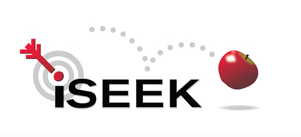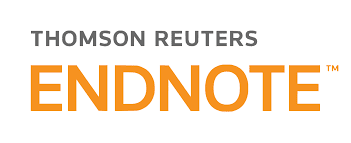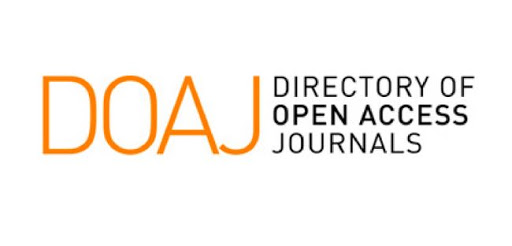Aim & Scopes
Sapporo Medical Journal aims to distribute and expand medical data to the World as well as build a supportive and vibrant community of researchers to connect and explore ideas by publishing articles related to all fields of medicine. Sapporo Medical Journal believes that quality and ethical research. The journal seeks to publish original research articles that are hypothetical and theoretical in its nature and that provide exploratory insights in the following fields but not limited to:
LATEST PUBLISHED PAPERS

Abstract : To prevent the increase in the spread of new cases of Covid-19 requires the use of more medical equipment quantity such as Personal Protective Equipment (PPE), rapid and swab test than in normal conditions. In consequence, this Pandemic situation produces more medical waste in Primary Health Centers (Puskesmas), which must be managed according to the required health protocol. This study aims to describe the medical waste generation during the Covid-19 pandemic and its management in puskesmas. The research design used was a cross-sectional survey. This research was conducted at 60 health centers in Bandung City. The results showed there was no difference in the methods of managing medical waste under normal conditions with the Covid-19 pandemic. 93.3% out of 60 puskesmas experienced an increase in the amount of medical waste of 43.19% average. Most of them have sorted medical waste from domestic waste. Medical waste packaging in temporary storage has not been labeled and stored for more than two days at temperatures above 00C without using cold storage. Based on the result, it is recommended that integrated waste storage is needed per region for the temporary storage of medical waste, which is equipped with cold storage. The person in charge of the Environmental Health program in Puskesmas, 78.3% were Sanitarian/Environmental Health Workers.

Abstract : COVID-19, an RNA virus that is a member of the Coronaviridae family is currently considered a global pandemic by the World Health Organization (WHO). This obligates the implementation of special universal precautions and guidelines. Saudi Arabia (SA) followed the WHO guidelines by adopting the Personal Protective Equipment (PPE) as a guard against this infection. The aim is to report the knowledge and perception about COVID-19 infection and its protective measures. These include hygienic tools and PPE. The study targeted the inhabitants of Gulf Cooperation Council (GCC) with a special emphasis on SA. A cross-sectional anonymous Arabic language questionnaire-based study was performed. It included forty-four questions to gauge the correlations between sociodemographic data, knowledge and perception of preventive tools against COVID-19. The study included 3278 participants. The majority of the sample (98.5%) lived in SA. Excellent knowledge and perception about COVID-19 prevention were noted in 16% of the respondents. Most participants (70.6%) wore gloves after a proper hand hygiene. Moreover, 97.1% had employed face masks in public. Fortunately, 98.7% followed the WHO guidelines of social distancing. The Gulf inhabitants, particularly those of SA, are more knowledgeable with a positive attitude towards the proper hygienic tools and PPE in preventing COVID-19 infection. This may be attributed to the comprehensive Ministry of Health protective guidelines.

Abstract : Background: COVID-19 viral infection outbreak poses a great challenge to the global health facilities including those in Saudi Arabia. The current study aimed to evaluate the Saudi community perception and knowledge about COVID-19 pandemic. It also assessed the psychological impact and the guidelines to control the outbreak. Methodology: A descriptive cross-sectional anonymous Arabic language questionnaire-based survey was conducted targeting the Saudi populations. Results: Seven hundred and twenty one Saudi participants were included in this study. Most of them (n=503, 69.8%) reported satisfactory knowledge and information about COVID-19. Moreover, they mostly agreed (n=707, 98.1%) that implementing the Saudi Ministry of Health (MOH) guidelines is crucial to control the pandemic. Anxiety and stress were highly pronounced among 297(41.2%) of the studied sample. However, they reported different conflicting opinions about the community tools to control the infection outbreak. Conclusion: The current study participants were fully acquainted with COVID-19 pandemic and its preventive measures. Yet, this does not concur with the high registered number of COVID-19 in Saudi Arabia. Hence, further studies with higher population numbers may be needed for further clarity of the COVID-19 community perception.

Abstract : We developed a thematic, Indonesian-translated version, of Pediatric Symptom Checklist 17 (PSC-17) to assess the prevalence of the behavioral problem in the adolescent population. This study is a cross-sectional study aiming to assess the validity and reliability of PSC-17 in the Indonesian language. A questionnaire of seventeen questions was prepared to assess behavioral problems in the form of attention, internalizing, and externalizing symptoms. The study population is adolescents aged 15-17 years old in Gorontalo City, Province of Gorontalo, Indonesia. Subjects were asked to self-answer the questionnaire. The scale of the problem in internalizing, attention, and externalizing subscales were calculated from the obtained results. Validity was measured by using Pearson correlation strength test and reliability was measured by using Cronbach’s Alpha reliability test. As many as 384 participants were enrolled, in which 380 complete answers towards the PSC-17 Indonesian Version were obtained. Pearson correlation strength test showed that PSC-17 is valid under the Pearson r product moment of df = 378 under two-tailed alpha α = 0.05 (p<0.001). Cronbach’s Alpha reliability test showed high reliability of the PSC-17 (α=0.821). Based on our findings, Indonesian version PSC-17 is a valid and highly reliable set of questions to assess pediatric behavioral problems, especially in the adolescent population.

Abstract : Intradialytic parenteral nutrition is a complementary route of nutritional administration to treat the 5th renal stage hemodialytic malnourished cases. Multiple clinical studies have elucidated contradictory suggestions regarding Intradialytic parenteral nutrition efficacy and validity. This review displays a comprehensive assessment for the use of Intradialytic parenteral nutrition, the controversy over indications, benefits, and risks, as well as summarizes the current recommendations for Intradialytic parenteral nutrition indication and variable health outcomes.






















